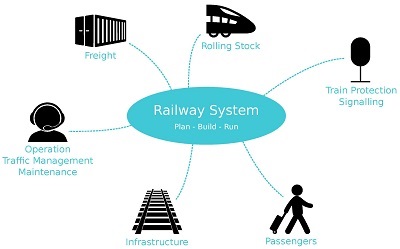Introduction
On June 17, a tragic train accident occurred near New Jalpaiguri in West Bengal, resulting in the loss of 10 lives and injuries to over 40 people. This incident, involving the Kanchanjunga Express and a goods train, highlights significant gaps in railway safety protocols and the urgent need for systemic improvements. The collision took place due to malfunctioning automatic signals, leading to both trains being manually cleared to run in the same block section within a mere 15-minute gap. This raises critical questions about the current safety measures in place and the role of human error and technological failures in railway operations.
The Mishap and Initial Response
The accident was caused when a goods train rammed into the rear of the 13174 Down Agartala Sealdah Kanchanjunga Express at 8.55 a.m. The trains were allowed to operate manually because the automatic signaling system between Ranipatra and Chattar Hat stations was not functioning. This incident exposed the vulnerabilities in the current railway signaling system and the protocols followed during such failures.
The Railway Board initially attributed the accident to the negligence of the loco pilot of the goods train, who allegedly disregarded the General and Subsidiary Rules (G&SR) by proceeding at normal speed. However, this stance was later retracted, acknowledging that such an incident could not be solely blamed on one individual. The inquiry into the mishap will examine the chain of command and the procedures followed, including the roles of the station masters, section controllers, signal staff, and gatemen.
Signal Failure and Its Management
Signal failures are not uncommon in Indian Railways, but they constitute only a small percentage of overall accidents. During such failures, trains can be operated under caution with specific protocols in place. The station master issues a TA-912 notice and a 'line clear' ticket under the G&SR, authorizing loco pilots to proceed cautiously past a red signal. The rules mandate that the train should proceed at a reduced speed of 15 kmph, ensuring it can stop short of any obstruction. However, these procedures did not prevent the recent collision, indicating possible lapses in following or enforcing the safety protocols.
The Role of Kavach
The Kavach system, an advanced anti-collision device, could have potentially prevented this accident by automatically slowing down the goods train. However, its implementation has been slow due to a lack of vendors and other logistical challenges. Currently, Kavach is operational on only 1,500 km of the nearly 68,000 km railway network. The delayed rollout of such critical safety technology underscores the need for accelerated efforts and increased investment to enhance railway safety across the entire network.
Human Factors and Manpower Shortage
Human error has been a significant factor in many railway accidents. However, in this case, the crew of the goods train had adequate rest before starting their shift, indicating that fatigue was not a contributing factor. Despite this, the incident brings to light the broader issue of manpower shortages in Indian Railways, with nearly 18,799 vacancies for loco pilots alone. This shortage can lead to overworked staff, increasing the risk of human errors and compromising safety.
Recommendations and Systemic Improvements
Several committees have analyzed railway safety and made numerous recommendations. The Kakodkar Committee emphasized the need for an independent Railway Safety Authority to oversee safety regulations, separating rule-making, operations, and regulatory functions currently vested in the Railway Board. Implementing such recommendations could enhance accountability and safety oversight in railway operations.
Investment in new technologies and infrastructure is also crucial. However, the financial constraints faced by Indian Railways, driven by political and economic considerations, limit the available capital for modernization. Thus, it is imperative for the Union government to prioritize railway safety and facilitate debates in Parliament to build a political consensus on the direction of growth for Indian Railways.
Conclusion
The tragic accident near New Jalpaiguri underscores the critical need for systemic reforms and technological advancements in Indian Railways. Addressing signal failures, implementing advanced safety systems like Kavach, and tackling manpower shortages are essential steps to prevent such incidents in the future. Moreover, establishing an independent Railway Safety Authority and prioritizing investments in railway safety can create a safer and more reliable railway network. Ensuring the safety of millions of passengers and railway staff must remain a top priority for Indian Railways and the government, necessitating immediate and sustained efforts towards comprehensive safety improvements.
|
Probable Questions for UPSC Mains Exam
|
Source - The Hindu







